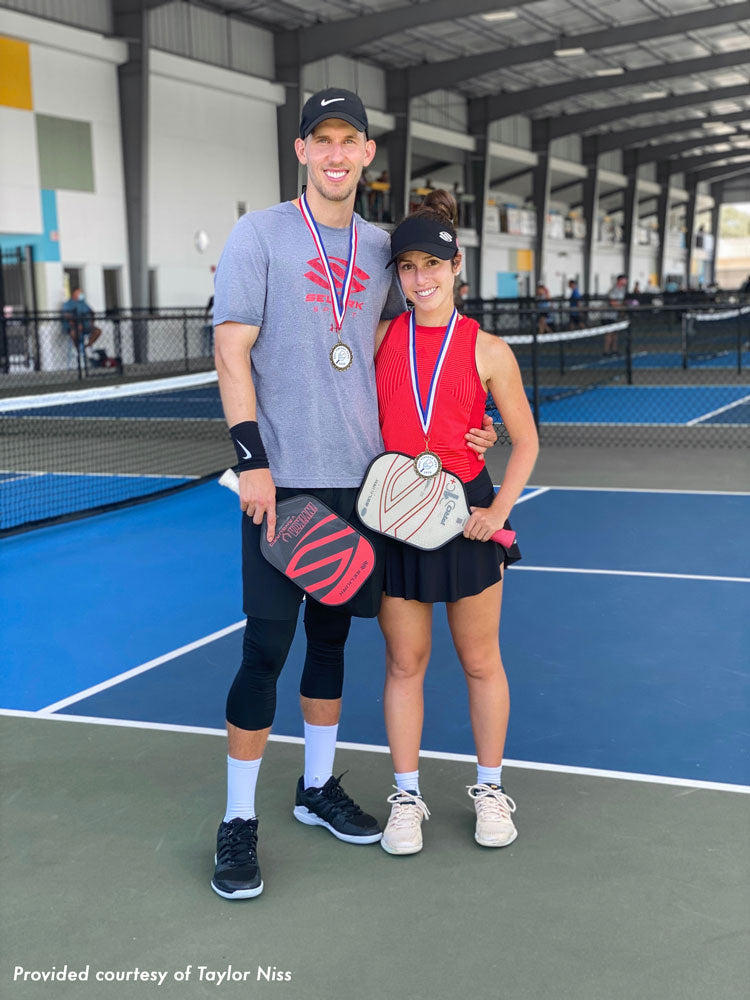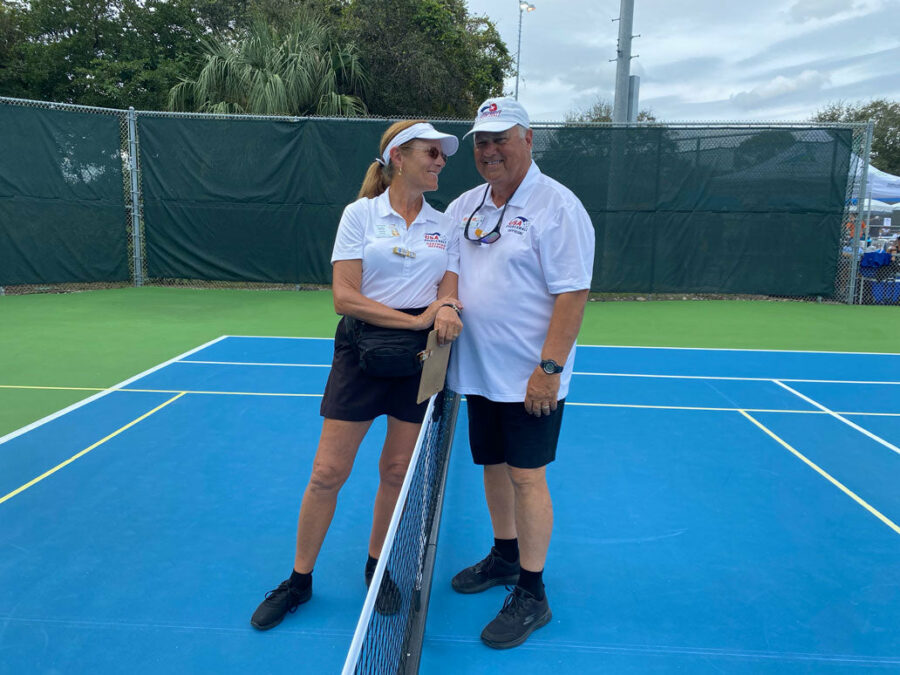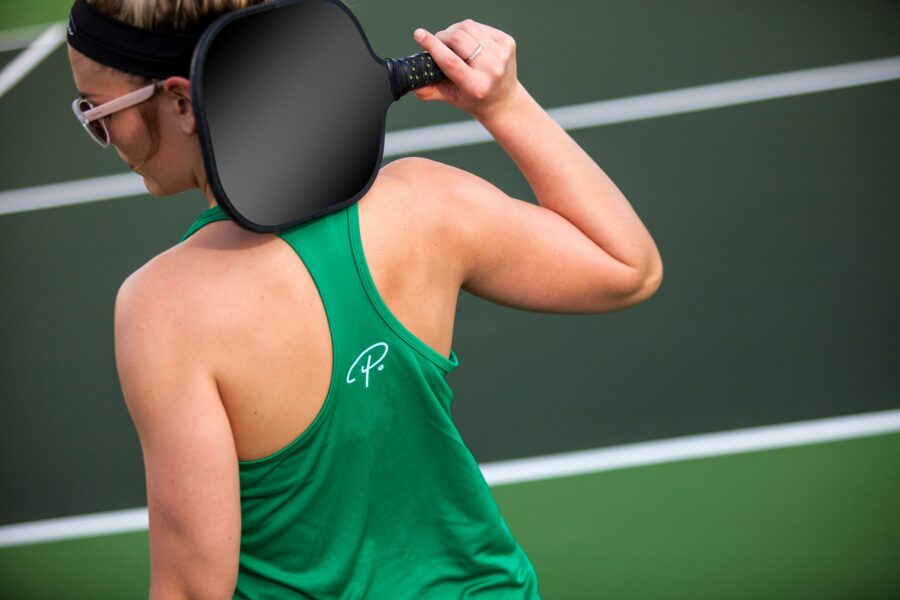One of the best things that can be done for the growth of pickleball is simply to teach others the game – in particular, to teach kids the game. This is exactly what one member of the South Florida community is doing.
Teaching pro, Taylor Niss, is passionate about teaching others the sport of pickleball. This passion stems from her general passion for teaching others—regardless of what the subject is. Niss, a young professional in her 20s, taught STEM subjects to school children for several years after receiving her master’s in education. It was during this portion of her teaching career that Niss found the sport of pickleball through her parents, Daniella and Michael Niss.
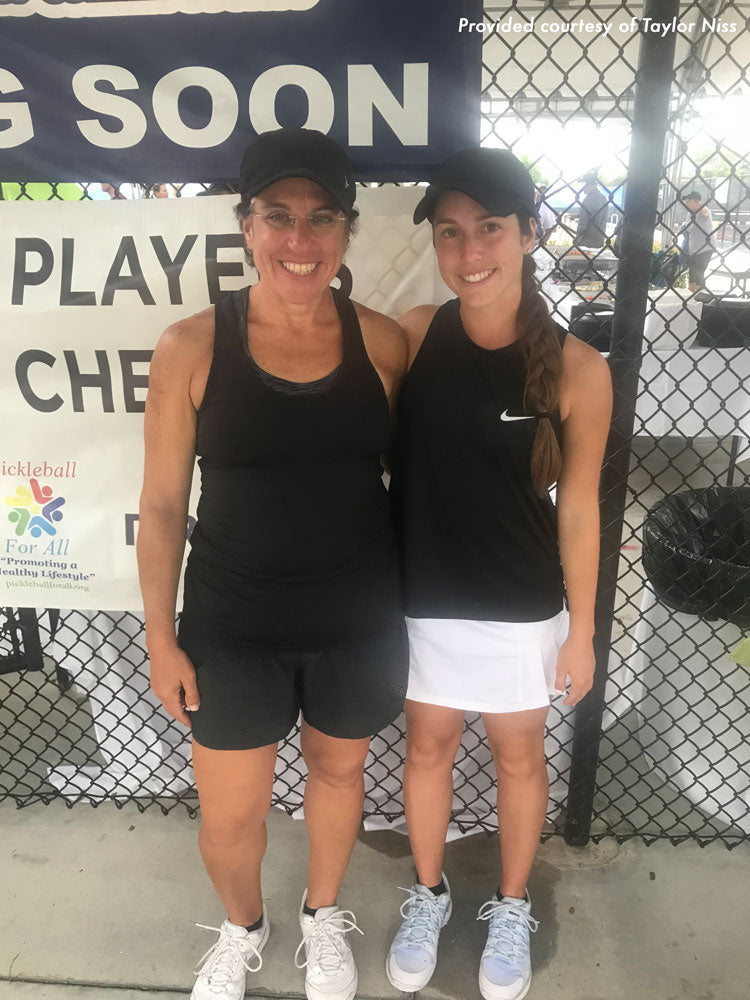
Like so many others, once she finally got a pickleball paddle in her hand, Niss was quickly bit by the “pickleball bug.” She found the sport of pickleball was a way to combine three things that are incredibly important to her – (1) family, (2) friends, and (3) staying healthy – as she was able to play an active game for exercise, while being on a pickleball court with her parents, her boyfriend, Brandon Hubschman, and her best friend, Brittany Hubschman, all at the same time. Niss notes that nothing else does that for her, as she typically cannot do an Orange Theory workout with all of her friends and family – plus, Niss jokes that hard HIIT workouts are not all that fun – unlike pickleball.
With her passion for pickleball, Niss has decided to merge this with her passion for teaching, as she is now teaching pickleball at Boca Bridges, which is a large community in Boca Raton, Florida. Niss, along with her boyfriend, Brandon Hubschman, are in charge of the pickleball programming at the club and the pair go above-and-beyond by organizing round robins and other events that encourage not only pickleball play, but also community.
One of the latest round robins that Niss organized was an adult/kid round robin. The premise was that each team needed to include one player under the age of 18 and one player over the age of 18. With about 20 pickleball players on the day, Niss grouped the teams into beginner and advanced divisions (based on general skill level and what the teams wanted to get out of the day) and had each team play each other team in their respective division. One fun “ice-breaker” requirement to note is that Niss had the kids on each team play rock-paper-scissors to determine who would serve first. Plus, the kids had to introduce each other and their respective partners at the start of each game. After the round robin format, all of the players were encouraged to mix-in in an open play format. (For more on round robin formats, check out Pickler’s pickleball blog, which was written by Niss herself!)
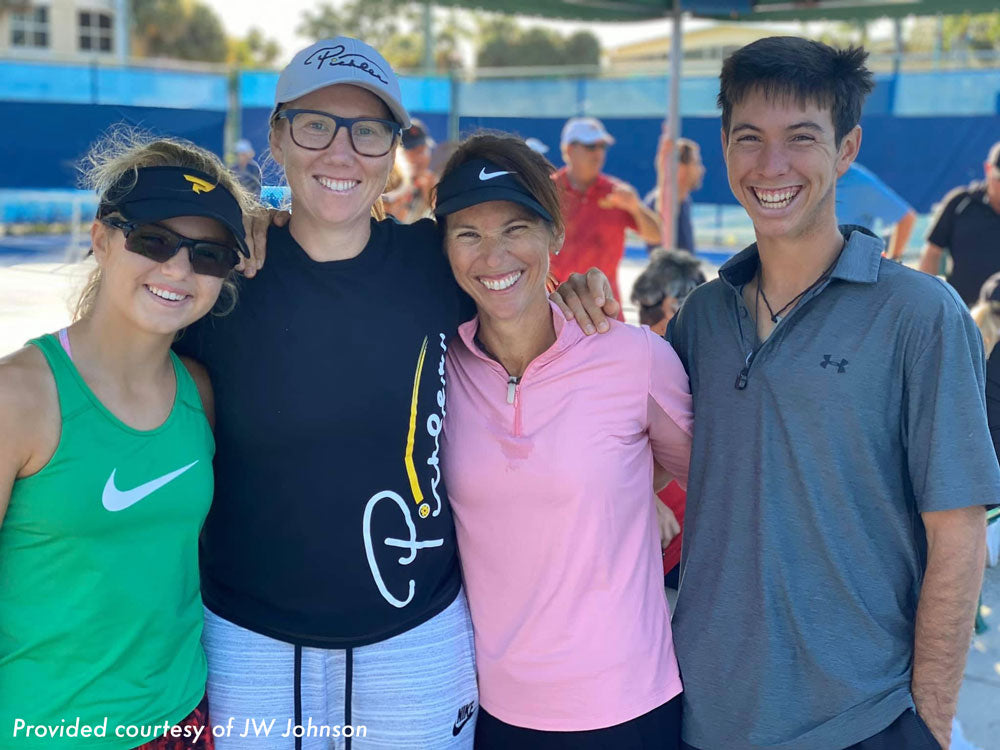
The reasoning behind the adult/kid round robin concept was that this may be one of the few opportunities that an adult and child could play together in a competitive environment, as typically the levels of play between the adult and child are very different. Further, younger kids may have trouble keeping a rally going with other younger kids when first starting in the sport. By having an adult alongside a younger kid, these rallies are typically easier to keep going. Plus, given the current demographics of the sport of pickleball, there are not many clubs or communities that have a lot of kids on court. This format gives the younger kids an opportunity to learn, play, and be social in a less intimidating environment, as compared to jumping into open play at the local park, where no one their age may be present.
From Niss’ perspective, the results of the adult/kid round robin were three-fold – especially for the kids: (1) gained confidence (if at all shy when arrived, no shyness existed by open play at the end of the round robin, as everyone was mixing in and having fun); (2) made new friends (with other players both their age and the other adults); and (3) improved their skill set in just a few hours. She also compared the experience of the adult/kid pickleball round robin with watching recess when she was a school teacher, as Niss noted that line calls were friendly, rather than combative and competitive on the recess playground (e.g., “that was not out, you cheater!”). This round robin format encouraged more friendliness, good sportsmanship, and overall social interaction.
This experience from the adult/kid round robin organized by Niss begs the question of whether we need more opportunities for kids to play the sport of pickleball. Based on the positive effects of the round robin – notably, in the kids’ development, which includes both pickleball skills and skills (tangible and intangible) that are transferable from the pickleball court to other aspects of life, such as communication, sportsmanship, teamwork, and social interaction – the answer should be a resounding yes. We need more opportunities for the younger generations to get a paddle in their hand and play (which should include in-school curriculums, especially since pickleball can be played both indoors and outdoors, and mini games are quite easy to accomplish to get kids started).
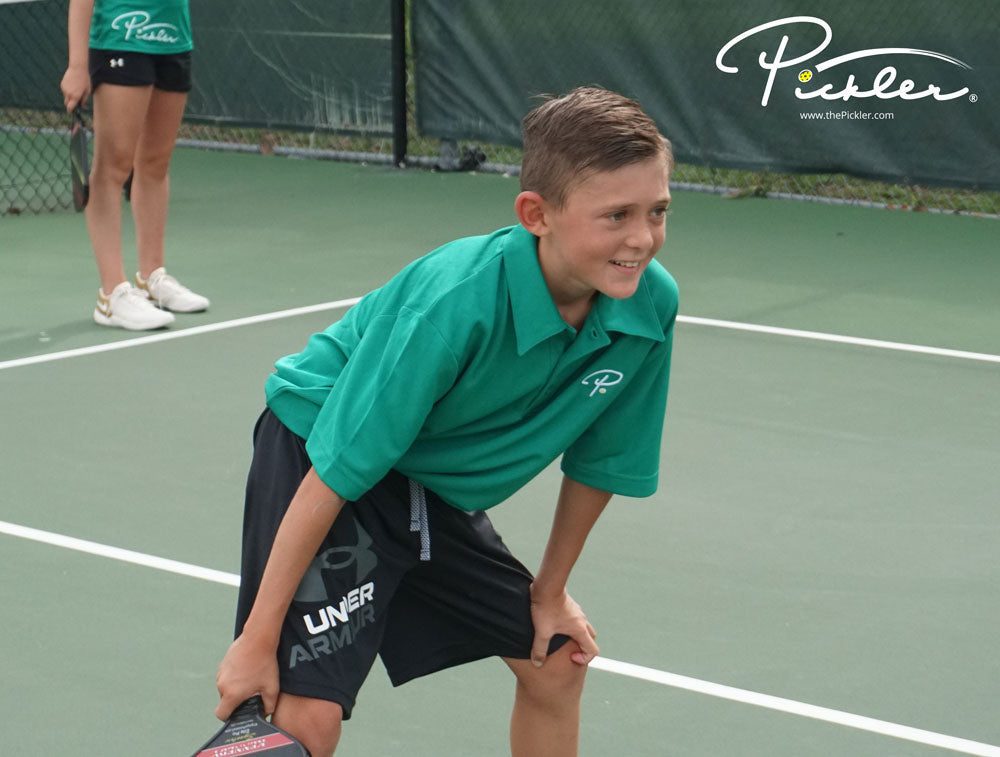
Not only is getting more kids to play pickleball good for the kids, but it is also good for the growth of pickleball. Pickleball only grows by sharing it with others and, by sharing with the younger generations, that ensures that the sport of pickleball will endure over time. This is why Niss, after every lesson or on-court interaction with a child, always says something like:
Alright, you have played pickleball once, so that means you are an advocate for the sport! You have to talk about it and tell your friends. When they ask you at school what you did this weekend, you are going to tell them that “I learned to play a new sport called pickleball,” right?!
We should all follow Taylor’s lead and teach others, including kids, to play pickleball. Whether it is your kids, your grandkids, or your friends, we encourage you to share the sport of pickleball with others because, as you may already know and as you may be able to tell from the results of the adult/kid round robin, pickleball is more than a sport. I mean, other than a pickleball court, where else can people – including kids – from all different backgrounds, all ages, all skill levels and athletic abilities, and all interests, come together, work together (in doubles), hold a rally, and have fun?
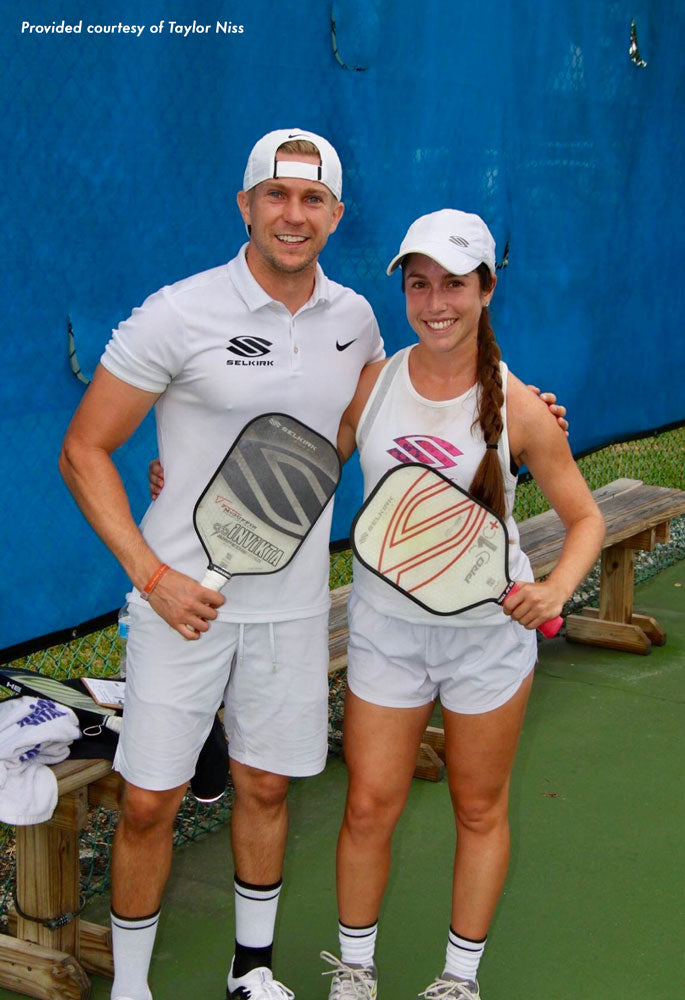
If you are ready to hit the pickleball court and teach others, heed Taylor’s advice, which is to make it, first and foremost, fun! And, if you are a kid looking to get started in the sport, get out there and start hitting – it can be intimidating at first (including at times the scoring system), but the pickleball community will welcome you with open arms (and, to be honest, everyone messes up or otherwise forgets the score from time to time).


